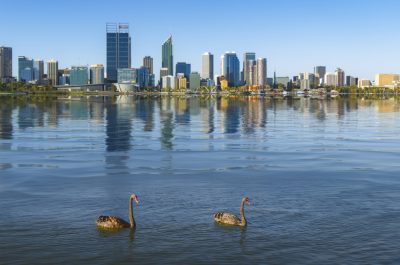Dynamic connections, not just interesting friends
Our sun-drenched land is occasionally overwhelmed with the amount of electricity generated by solar PV and is causing networks to think differently about one of the most basic services that networks provide: the connection agreement.
For networks, this means that we must look ahead of the curve and continue to provide the services that consumers and society expect. It not only reflects the value of careful planning and preparation to avoid difficulties, but to also seize and capitalise on opportunities as they appear.
Two weeks ago in scenic Port Macquarie, networks from around Australia sent their best and brightest to do just that.
Static vs dynamic
The topic of this particular Future Network Forum was ‘dynamic connections’. You may ask what they are … The vast majority of household solar connections today are ‘static’ i.e. customers that export solar usually have a fixed ‘limit’ of power (usually 5 KW or lower) that can export back into the grid. This is usually assigned at the time they get solar PV and doesn’t really change unless something material happens.
A ‘dynamic’ connection is the result of a concept called ‘dynamic operating envelopes, which we’ve talked about previously. It is also known in some places as ‘flexible exports’, Where the ‘limit’ can be throttled and move up and down depending on the condition of the nearby network.
You can think of it in terms of a light switch:
- static means the light is either ‘on’ or ‘off’,
- dynamic is having a dimmer function on your solar exports.
When you start to think of the implications of this at scale, it allows network operators to have a much finer level of control in real(-ish) time, instead of applying one number at one point in time and only having another opportunity every few years when the resident either moves house, gets solar or rebuilds.
This capability is critical in maximising the amount of clean solar that is exported (supplied into the local network) and available for your neighbours’ use locally. This has huge implications for emissions reduction and customer bills.
It is also a vital tool that networks can use to support AEMO in keeping the stability of the grid when there’s so much solar that it causes an issue called minimum system load.
Australian’s insatiable uptake of solar PV is unlikely to stop and means that networks are thinking hard about how to work with the tide instead of constantly trying to fight against it.
Aside from the technical challenges (which are not small), customers love the choice of having flexible or dynamic connections with more than 85% of eligible SAPN customers choosing flexible over static.
The trend is likely to extend to networks in other jurisdictions with keen solar enthusiasts such as Queensland, Victoria and New South Wales. It truly seems like dynamic connections will be part of the toolkit that networks use in making a safe, reliable and renewable power system a reality.
After one and a half days at the Future Networks Forum of sharing war stories, learning from one another, making new connections and deep intellectual discussion of meeting the challenges ahead, it truly feels like the goal of a renewable Australia is truly achievable.
In a future article, we’ll lightly dip our toes into some of the technical challenges that networks are solving and explore the hidden relationships between CSIP-Aus, minimum system load and cybersecurity. Stay tuned!
